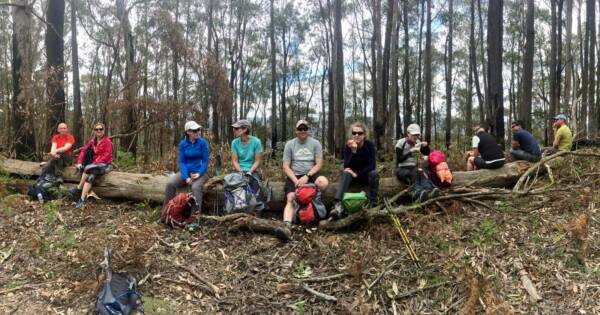Dehydrating food is a fantastic way to prepare lightweight, long-lasting meals and snacks for your hiking adventures. If you’ve already experimented with dehydrating food or are considering giving it a go, choosing the right tools can make all the difference. This post explores the essential features to look for in a food dehydrator, as well as alternative methods like using an oven or BBQ. Whether you’re just starting out or a seasoned hiker looking to refine your process, you’ll find plenty of practical advice here.
Why Dehydrate Food for Hiking?
Dehydrating food is a practical solution for anyone wanting to save weight and space in their pack. By removing water, you reduce the food’s bulk without sacrificing its nutrients. This makes it perfect for trail meals, whether you’re preparing hearty soups, simple snacks, or complete dinners. Plus, dehydrating your own food means you control the ingredients, which is a bonus for those who prefer healthy, preservative-free options.

Key Features to Consider in a Food Dehydrator
If you’re in the market for a food dehydrator, here are some features to keep in mind:
- Adjustable Temperature Settings: Different foods require different drying temperatures. For example, fruits dehydrate best at around 55°C, while meats for jerky need higher temperatures to ensure safety. A dehydrator with adjustable settings gives you the flexibility to experiment with a variety of foods.
- Capacity and Expandability: Think about how much food you plan to dehydrate in one go. Smaller dehydrators with four to five trays are ideal for occasional use, while larger models with expandable trays are great for bulk preparation.
- Airflow and Heat Distribution: Consistent drying is essential. Models with horizontal airflow (fan at the back) tend to provide even heat distribution, whereas vertical models (fan at the top or bottom) may require you to rotate trays for uniform results.
- Timer and Auto Shut-Off: Having a timer and auto shut-off feature is handy for overnight dehydration or when you’re busy. This ensures your food doesn’t overdry or burn.
- Tray Material: Trays are typically made from plastic or stainless steel. Plastic trays are lightweight and more affordable, while stainless steel trays are durable, easier to clean, and better for handling high temperatures over extended periods.
- Ease of Cleaning: Look for models with removable trays that are dishwasher-safe or easy to wash by hand. Dehydrating sticky fruits or sauces can be messy, so easy maintenance is a big plus. Check the manufacturer’s guidelines to ensure proper cleaning methods for your model.
- Energy Efficiency and Noise: Dehydrators can run for hours, so energy consumption is worth considering. Similarly, if noise is a concern, check reviews to see if a particular model is quieter.
- Clear Viewing Window: A transparent door or front panel allows you to monitor the progress of your food without opening the dehydrator. This helps maintain a consistent temperature and speeds up the drying process.
- Compact Design: If kitchen space is limited, look for a compact model that can be easily stored when not in use. Foldable or stackable trays are also great space-saving features.
- Accessories Included: Some dehydrators come with extras like fruit roll sheets, fine mesh inserts for smaller items, or jerky-making kits. These can save you from needing to purchase additional items separately.

Alternative Dehydration Methods
Not ready to invest in a dehydrator? No worries. There are other methods you can use to dehydrate food at home.
Using an Oven
Most conventional ovens can be used to dehydrate food, though it’s not as efficient as a dehydrator. Here’s how:
- Set your oven to its lowest temperature (around 50–60°C).
- Use baking trays lined with parchment paper to spread the food in a single layer.
- Leave the oven door slightly ajar to allow moisture to escape.
- Rotate trays periodically for even drying.
Using a BBQ or Grill
While unconventional, a BBQ with a lid can also serve as a dehydrator:
- Ensure you can maintain a low and steady temperature.
- Place food on wire racks or trays, and keep the lid closed as much as possible.
- Use a thermometer to monitor the temperature and adjust vents to control heat.
Air-Drying or Solar Drying
In dry, warm climates, some foods can be air-dried outdoors:
- Hang herbs or place sliced fruits and vegetables on mesh screens.
- Protect the food with fine mesh to keep insects away.
- This method works best for low-humidity environments.

How Long Can You Store Dried Foods?
Properly stored dried foods can last for months and potentially up to a couple of years, depending on the ingredients and storage conditions. However, as with store-bought packaged products, if in doubt, throw it out. Moisture is the main enemy of dried foods, as it can lead to mould and spoilage. Keep an eye on your containers to ensure no moisture gets in.
Here are some general guidelines for common foods dehydrated for hiking:
- Dried fruit: Up to six months if stored in the refrigerator or one month in the pantry after opening.
- Jerky (homemade): Up to two months in the pantry or refrigerator.
- Dried vegetables: Up to six months in the pantry when stored properly in airtight containers.
- Dried chicken: Up to six months in the pantry or refrigerator.
- Dehydrated pasta: Up to one year in the pantry.
- Homemade hiking stew: Up to six months if stored in an airtight container in a cool, dry place.
- Chili con carne (dehydrated): Up to six months in the pantry or refrigerator.
- Dried beans (like lentils): Up to one year in the pantry.
Proper storage methods such as using vacuum-sealing or airtight containers can further extend the shelf life of dehydrated food.

How to Store Dried Foods
Dried foods should be stored in airtight containers and placed in a cool, dry area, away from heat and moisture. This ensures maximum shelf life and reduces the risk of spoilage.
Using a vacuum sealer is an excellent option for long-term storage, as it removes most of the air, helping to prevent bacterial growth caused by oxygen exposure. Alternatively, you can use mason jars, resealable bags, or food-grade containers for shorter-term storage.
Tips for Optimal Storage:
- Use silica gel packets or oxygen absorbers to minimise moisture.
- Label containers with the contents and the drying date.
- Store dehydrated food in dark places, as exposure to light can degrade some nutrients.
Environmental Factors That Affect Shelf Life:
- Temperature: Even when properly dried and sealed, temperature will affect the shelf life of your food. For example, food stored at 15°C has twice the shelf life as food stored at 27°C.
- Moisture: The whole point of dehydrating food is to remove as much moisture as possible, so the last thing you want to do is reintroduce moisture during storage!
- Oxygen: Oxygen causes oxidation, which leads to the breakdown of food, loss of flavour, and a shorter shelf life.
- Light: Like oxygen, light can break down food, causing off-flavours, loss of nutrients, and reduced shelf life.
The Solution:
Store your dehydrated food in airtight containers in a cool, dry, dark place with good ventilation. Let the food cool completely before transferring it to a storage container to help prevent condensation.
Remember to sanitise your hands and containers before handling food for storage, and make sure everything is completely dry.
Choosing the Right Option for Your Needs
When deciding between a dehydrator or alternative methods, think about how often you plan to dehydrate food and the types of food you’ll be preparing. For occasional use, an oven might be sufficient, but if you plan to regularly dehydrate meals for hiking trips, investing in a quality dehydrator can save time and energy.
Tips for Beginners
If you’re new to dehydrating, start small. Experiment with simple foods like apple slices or tomatoes to get a feel for the process. Keep notes on drying times and temperatures to refine your technique. It’s also a good idea to store dehydrated food in airtight containers or vacuum-sealed bags to maximise shelf life.
Share Your Experiences
Have you tried dehydrating food for hiking? Do you have a favourite method or go-to recipes? You can check out some of my dehydrated food recipes here. Share your tips and experiences in the comments below—your insights could inspire others to give it a go.





